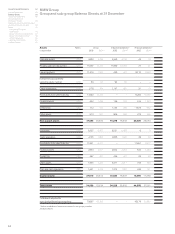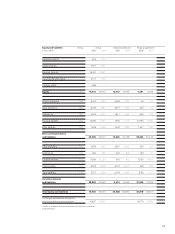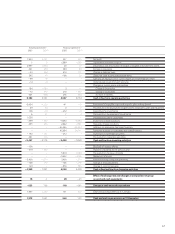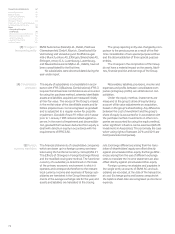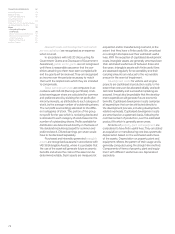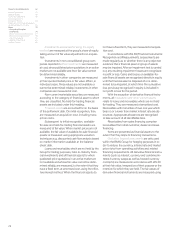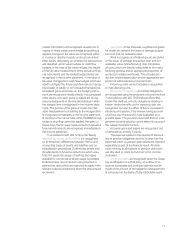BMW 2005 Annual Report Download - page 75
Download and view the complete annual report
Please find page 75 of the 2005 BMW annual report below. You can navigate through the pages in the report by either clicking on the pages listed below, or by using the keyword search tool below to find specific information within the annual report.74
Research costs and development costs which
are not capitalised are recognised as an expense
when incurred.
In accordance with IAS 20 (Accounting for
Government Grants and Disclosure of Government
Assistance), public sector grants are not recognised
until there is reasonable assurance that the con-
ditions attaching to them have been complied with
and the grants will be received.They are recognised
as income over the periods necessary to match
them with the related costs which they are intended
to compensate.
Basic earnings per share are computed in ac-
cordance with IAS 33 (Earnings per Share). Undi-
luted earnings per share are calculated for common
and preferred stock by dividing the net profit after
minority interests, as attributable to each category of
stock, by the average number of outstanding shares.
The net profit is accordingly allocated to the differ-
ent categories of stock. The portion of the group
net profit for the year which is not being distributed
is allocated to each category of stock based on the
number of outstanding shares. Profits available for
distribution are determined directly on the basis of
the dividend resolutions passed for common and
preferred stock. Diluted earnings per share would
have to be disclosed separately.
Purchased and internally-generated intangible
assets are recognised as assets in accordance with
IAS 38 (Intangible Assets), where it is probable that
the use of the asset will generate future economic
benefits and where the costs of the asset can be
determined reliably. Such assets are measured at
acquisition and/or manufacturing cost and, to the
extent that they have a finite useful life, amortised
on a straight-line basis over their estimated useful
lives. With the exception of capitalised development
costs, intangible assets are generally amortised over
their estimated useful lives of between three and
five years. Intangible assets with finite useful lives
are assessed regularly for recoverability and their
carrying amounts are reduced to the recoverable
amount in the event of impairment.
Development costs for vehicle and engine
projects are capitalised at production costs, to the
extent that costs can be allocated reliably and both
technical feasibility and successful marketing are
assured. It must also be probable that the develop-
ment expenditure will generate future economic
benefits. Capitalised development costs comprise
all expenditure that can be attributed directly to
the development process, including development-
related overheads. Capitalised development costs
are amortised on a systematic basis, following the
commencement of production, over the estimated
product life which is generally seven years.
All items of property, plant and equipment are
considered to have finite useful lives.They are stated
at acquisition or manufacturing cost less systematic
depreciation based on the estimated useful lives
of the assets. Depreciation on property, plant and
equipment reflects the pattern of their usage and is
generally computed using the straight-line method.
Components of items of property, plant and equip-
ment with different useful lives are depreciated
separately.
Group Financial Statements 62
Income Statements 63
Balance Sheets 64
Cash Flow Statements 66
Group Statement of
Changes in Equity 68
Statement of Income and Expenses
recognised directly in Equity 69
Notes 70
--Accounting Principles
and Policies 70
--Notes to the Income Statement 81
--Notes to the balance sheet 90
--Other Disclosures 114
--Segment Information 121
Auditors’ Report 125


